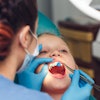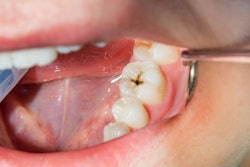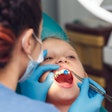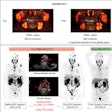
Type 2 diabetes (T2D) may increase the risk of caries and reduce salivary flow, pH, and buffering capacity. Dentists should prioritize the oral health of this population due to these heightened risks, according to a review published in the Journal of Dentistry.
Further, the decayed, missing, filled teeth (DMFT) index was significantly higher in individuals with T2D than in individuals without diabetes, the authors wrote.
"Healthcare professionals should pay attention to the oral symptoms of this population, enhance their oral healthcare awareness, and focus on prevention to protect the quality of life of those with T2D," wrote the authors, led by Ge Zhou of Sichuan University in China (J Dent, August 30, 2024, Vol. 150, 105321).
A systematic search was conducted using PubMed/Medline, Web of Science, Embase, and the Cochrane Library for relevant literature up to January 2024. Of 1,981 records, 98 studies were selected. A total of 39 studies met the eligibility criteria for qualitative synthesis, and 28 were suitable for meta-analysis, the authors wrote.
The study included observational research on the relationship between T2D and caries or salivary changes in participants age 18 and older. It compared individuals with diabetes to those without diabetes, as well as diabetics with good versus poor metabolic control. The outcomes focused on dental caries and salivary changes, they wrote.
The meta-analysis revealed that individuals with T2D had a higher DMFT score (mean difference, 2.27; 95% confidence interval [CI], 1.31 to 3.22; p < 0.00001) and lower salivary flow rate (standardized mean differences [SMD], -2.62; 95% CI, -4.38 to -0.86; p = 0.003), salivary pH (SMD, -1.35; 95% CI, -1.89 to -0.80; p < 0.00001), and salivary buffering capacity (SMD, -0.60; 95% CI, -0.93 to -0.27; p = 0.0004) compared to those without diabetes.
Six studies comparing caries the experience between well-controlled and poorly controlled T2D reported mixed results, with two showing significantly higher DMFT indices in poorly controlled diabetes. However, no significant differences were found in DMFT (mean difference, -2.15; 95% CI, -6.47 to 2.17; p = 0.33) or salivary buffering capacity (SMD, -0.05; 95% CI, -0.48 to -0.37; p = 0.80) between well-controlled and poorly controlled diabetes, according to the results.
The results, though, may be influenced by study design limitations, such as sample size and confounding factors. Future high-quality longitudinal studies are needed to better understand the link between T2D and caries, the authors wrote.
"It is recommended that dentists and endocrinologists focus their attention on the oral health of this population," Zhou et al concluded.




















